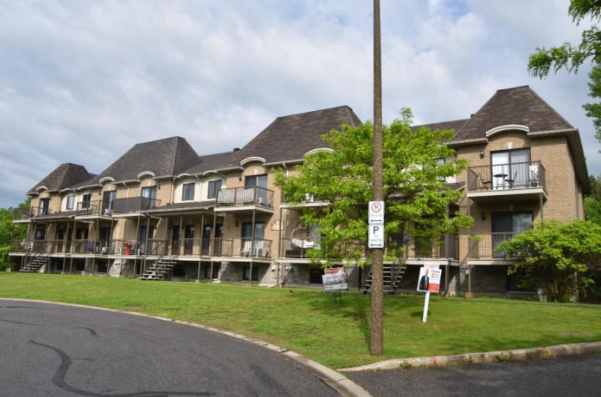Since Bill 16 came into effect in Quebec, deciding how much money to set aside for a condo’s reserve fund has become a big concern for co-owners. In the past, Article 1071 of the Civil Code of Québec required condo corporations to contribute a minimum of 5% of their common expenses to the reserve fund. However, this rule has been repealed. Today, condo boards must rely on a professional reserve fund study to figure out the proper amount to contribute.
For a newly constructed condo building, it’s an ideal time to comply with current legal requirements and avoid future surprises. Below, you’ll find a step-by-step guide on how to calculate and manage your reserve fund effectively.

Step 1: Understand the purpose of the reserve fund
A reserve fund is a separate account designed to cover major repairs and replacements needed to keep a condo building in good shape. Even new buildings can develop construction defects or hidden issues during the first few years. In Quebec, the harsh winter weather and freeze-thaw cycles can accelerate wear and tear on roofs, balconies, and parking garages.
Here’s why a well-maintained reserve fund matters:
- It helps you avoid sudden, costly special assessments.
- It preserves the building’s value and reassures potential buyers.
- It satisfies the requirements introduced by Bill 16 and supports sound condo management practices.
Step 2: Check Quebec’s legal requirements
With Bill 16 in force, condo boards are now legally required to carry out a complete reserve fund study at least once every five years. This professional study, typically performed by building engineering experts, assesses the remaining useful life of each major component, estimates replacement costs, and suggests a coherent financial plan.
Key points to remember:
- The old 5% rule is no longer in place.
- Recommendations in the reserve fund study are tailored to each individual building.
- Failing to comply with these regulations could lead to disputes and even legal action from condo owners.
Step 3: Identify the factors affecting your reserve fund
When calculating the reserve fund for a brand-new condo, keep the following in mind:
- Building size and architecture: Larger complexes have more elements to maintain.
- Construction materials: Concrete, brick, and wood each have different lifespans and maintenance costs.
- Shared amenities: Elevators, heating systems, indoor pools, underground parking, and so on will impact your budget.
- Climate: Quebec’s freeze-thaw cycles can cause faster deterioration in certain areas.
- Builder warranties: Although new buildings often have coverage for structural or mechanical components, these warranties eventually expire.
Step 4: Calculate your reserve fund contributions
1. The old method: 5% of common expenses
Previously, condo corporations often used a flat rate of 5% of their total common expenses. This approach is outdated and no longer aligns with Bill 16, as it doesn’t consider the unique features of each building.
2. New and advanced method: a professional reserve fund study
Genispec, for instance, is an engineering consulting firm in Quebec specializing in building inspections, structural assessments, and project management. By conducting a detailed analysis of your condo building, they can determine an accurate annual contribution.
Here’s a simplified example of how costs and contributions might be calculated:
| Building Component | Lifespan (Years) | Estimated Replacement Cost | Recommended Annual Contribution |
| Roof (membrane) | 20 | 50,000 $ | 2,500 $ |
| Elevator | 25 | 100,000 $ | 4,000 $ |
| Heating System | 15 | 30,000 $ | 2,000 $ |
| Balconies | 15 | 20,000 $ | 1,333 $ |
| Windows and Doors | 20 | 40,000 $ | 2,000 $ |
| Total (Annual) | – | – | 11,833 $ |
By adding up each component’s annual contribution, you can see the total amount that should go into the reserve fund every year. Tailoring this kind of breakdown to your property’s specific needs helps prevent underfunding.
Step 5: Implement strong reserve fund management
A precise calculation alone isn’t enough; you also need careful administration. Here are a few suggestions:
- Separate bank account: keep the reserve fund in an account that’s distinct from your operating budget.
- Track all expenses: maintain records of every invoice and create a detailed history of maintenance work.
- Communicate with co-owners: at every annual meeting, share the current status of the reserve fund and provide updates on planned repairs.
- Reassess regularly: construction costs change over time. Make sure to update your reserve fund study every five years or whenever a major change occurs.
- Seek professional help: entrusting your reserve fund study to a consulting engineering firm like Genispec can greatly increase accuracy and reliability.
A properly funded reserve = A healthy condo!
In short, calculating a reserve fund for a new condo in Quebec requires a professional and customized approach. Bill 16 highlights the importance of a detailed study that factors in a building’s structure, equipment, and local climate considerations. By leveraging the expertise of engineering professionals in building inspections, structural evaluations, and project management, you’ll be better prepared to protect your investment, ensure the longevity of your property, and enjoy long-term peace of mind.
